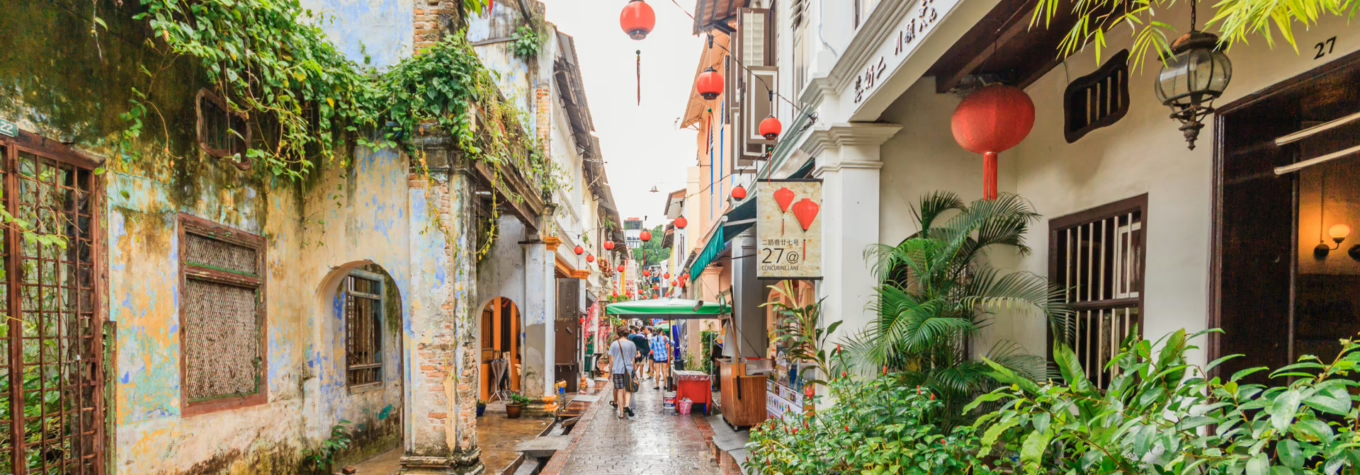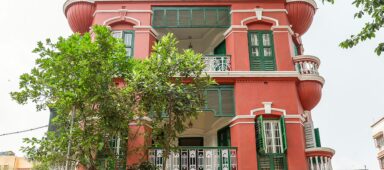Despite the influx of funky new bars, restaurants and hotels, Ipoh has not forgotten its colourful past
Ipoh has in recent years garnered attention as a hotspot for heritage enthusiasts. A former mining town in Malaysia’s Kinta Valley, Ipoh once earned its livelihood from the rich tin deposits in the surrounding hillsides. After the metal was first discovered here in the 19th century, huge numbers of Chinese labourers and investors flocked this way, transforming what used to be a small riverside village into a major mining community. Ipoh became the centre of British Malaya’s lucrative tin mining industry, the natural resource earning it the moniker “The City that Tin Built”.
Like many other boomtowns, though, the heyday didn’t last. In the 1980s, the local mining industry collapsed. Tin prices crashed and this flourishing community fell on hard times. By the turn of the millennium, Ipoh had closed its mines to concentrate on manufacturing. And as business moved to factories on the city outskirts, the once- lively downtown fell silent, its buildings in disrepair.

Ipoh had lost so much of its glitter that the 2001 Lonely Planet guidebooks described it as “so seedy you’re unlikely to linger”. And while other historic towns in the country – namely Melaka down south and Penang’s George Town, up north – were getting much-needed facelifts and garnering Unesco World Heritage status, Ipoh struggled to get back on its feet. It wasn’t until around 2013 when the city began to wake up, thanks to a renewed interest in local history that inspired street artists (among them the Lithuanian Ernest Zacharevic, who created many of George Town’s famed murals) to beautify its worn-out walls. And as the alleys brightened up, so did much of the old town.
The Ipoh revival
These days, the city feels upbeat, with many of its age-old structures sporting restored façades and fresh coats of paint. Tourists are a common sight along the five-foot ways, and business is brisk in the city’s numerous malls. There are even signs of gentrification in a few areas. At Lorong Panglima, a rather storied alley that’s better known as Concubine Lane, I sit down at Burps & Giggles – an art café serving picture-perfect burgers and lattes – while watching a stream of tourists amble through the strip.

They admire the old walls and take selfies with the street murals before browsing the line of ageing shophouses-turned-boutiques. In the old days, Concubine Lane was said to house the mistresses of rich towkays (businessmen); now it’s the bustling centre of tourist-friendly Ipoh. “People used to think Ipoh was just a place where old folks go to retire. This area was mostly rundown buildings when we opened Burps & Giggles back in 2012,” notes Amanda Teoh, the café’s owner.
“With all these new establishments around, the young people now have a reason to visit the neighbourhood and appreciate history.”
Amusing, too, is how this trendy quarter blends in nicely with the rest of this blue-collar town. Just a hop and a skip away from Burps & Giggles is Kong Heng Kopitiam, a traditional kedai kopi (coffee shop) that looks practically unchanged for the last 50 years. Housed on the ground floor of a three-storey Sino-Portuguese building, it shares the structure with the Sekeping Kong Heng – a picturesque hotel that oozes with nostalgia and a certain threadbare charm. Hiding behind weathered brick walls and an unmarked entrance, this quirky B&B has the feel of a chic lodging house built on an abandoned ruin.
Just around the block are dozens of other funky-cool establishments; eating spots like Artisan Handmade Bread and MarketPlace Waffle Bar, or hip hotels like the Happy 8 – all places that serve their cosmopolitan offerings in the confines of once-neglected heritage buildings.
The heart of Ipoh
These newfangled Instagram-friendly joints may be the talk of the tourists these days, but it’s undeniable that the neighbourhood still belongs to the old-timers. From Concubine Lane, I saunter out to streets that seem to have changed little through the decades. At Jalan Bijeh Timah, I walk past fabric merchants and silk tailors plying their trade alongside produce wholesalers. Jalan Bandar Timah, on the other hand, has me eating like a local at a row of kedai kopi serving Ipoh’s signature white coffee – that’s coffee roasted with margarine, brewed in a tin kettle and served with sugar and evaporated milk.

Needless to say, these no-frills eateries have been around for ages, and are also known as purveyors of time-honoured homegrown recipes. Light, savoury chee cheong fun – steamed rice rolls topped with fried shallots and a mushroom-based gravy– is a favourite at Sin Yoon Loong, while stir-fried char kway teow noodles and oven-baked egg tarts are the top draws at Nam Heong eatery, just across the road. Twenty metres away, Nam Chau beckons foodies with its rendition of classic Malaysian curry noodles.
My stroll also takes me to Jalan Sultan Yusof, at the edge of Ipoh’s Indian ethnic enclave, where I check out colourful saree shops and pooja stores packed with Hindu and Buddhist prayer items. Further north along this road is the original heart of Ipoh, the former CBD, with its massive British colonial-era buildings.
The Ipoh Tourist Information Centre has an informative vicinity map, which highlights such notable structures as the Chung Thye Phin Building – the elaborate, three-storey office of one of Malaya’s wealthiest tin magnates – and the Mikasa Photo Studio, formerly the workplace of a Japanese spy who relayed strategic info in the years before World War II. There’s also the Ipoh Town Hall with its imposing Neoclassical walls, not far from the elegant train station which is arguably one of the prettiest in Malaysia.
Keeping Ipoh’s memories alive
Walking through the city, I find more references to the past at just about every corner. At the Han Chin Pet Soo, vintage memorabilia gives a glimpse into the lives of both the lowly tin miners and their wealthy towkays. This opulent villa used to be a gentlemen’s club that offered gambling, women and opium to its regulars. Now a museum, it features a guided tour of the faithfully restored premises, highlighting the history of tin mining in the area and the intriguing (and admittedly dodgy) things that took place within its walls.
Later on, I make my way across the Kinta River where more helpings of nostalgia await. There’s a picture-perfect row of multicoloured Art Deco buildings along Jalan Sultan Idris Shah, just a stone’s throw from countless other traditional bakeries, coffeehouses and hawker havens brimming with heritage of the culinary kind.
I spend the next day sampling more local treats like egg-topped moonlight hor fun (stir-fried noodles) at Restoran Tuck Kee and spicy poppy-seed-infused nasi ganja (which translates to “marijuana rice”, although not because it contains cannabis but rather due to its addictive flavour) at Yong Suan curry house.
By the time I finish my explorations, I am thoroughly stoked from basking in (and eating) this rich cultural legacy. No longer the gritty domain of blue-collar workers, it now attracts people from all walks of life – tourists like me included. I now realise that such a story is common here in Ipoh, a city that’s taken charge of its future by celebrating its glorious past.
Trains and bus services from Kuala Lumpur to Ipoh are available daily.





